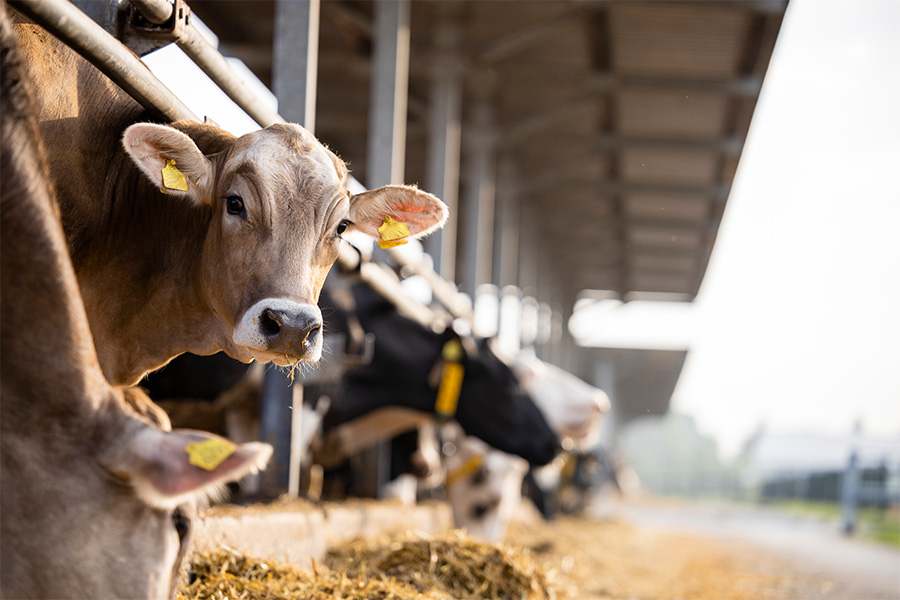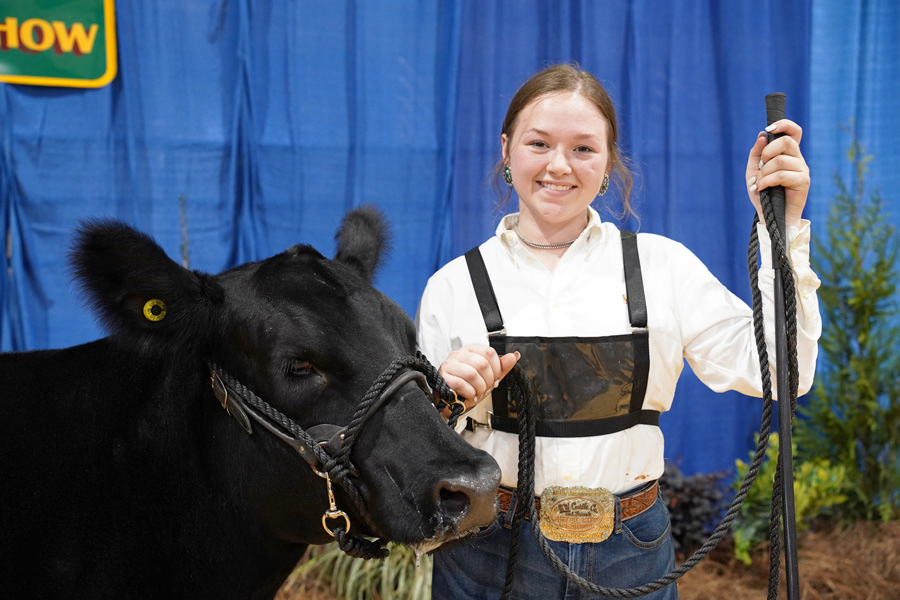Animal Production
-

This publication (WUFFDA) provides a program designed to help formulate feeds for poultry and swine. It is available in the following languages: Afrikaanse, Chinese, Croatian, English, French, Korean, Minnesotan, Portuguese, Russian, Spanish, Turkish and Farsi.
Gene M. Pesti, Chongxiao (Sean) Chen, Remzi I. Bakalli, Mike Azain, Dmitry V Vedenov, and Michael J. Azain
|
-

This publication describes management strategies to reduce heat stress, prevent mastitis and improve milk quality in dairy cows and heifers.
Steve Nickerson, Sha Tao, and Valerie E Ryman
|
-

C 904
Freeze Branding Cattle
To improve efficiency, cattle producers should place a high priority on identifying individual cattle and maintaining accurate records. One type of permanent identification is branding.
Lawton Stewart
|
-

B 1371
UGA Basic Balancer
The UGA Basic Balancer is a spreadsheet-based decision aid to formulate basic rations for beef cattle operations. The nutrient requirements used in this program are adapted from guidelines presented in the 2000 National Research Council publication “Nutrient Requirement of Beef Cattle: Seventh Revised Edition: Update 2000.” The UGA Basic Balancer program consists of a feed library, least cost feedstuff analyzer, a ration analyzer, and sections to balance rations for brood cows, bulls, heifers, and stockers.
The UGA Basic Balancer is intended to be a simple ration balancer that addresses energy (TDN) and crude protein (CP) requirements of cattle. This program does not take into consideration other requirements or limitations (for example, micro minerals, fat level, effective fiber, nonstructural carbohydrates, etc.). Before feeding any rations developed in this program, contact your local Extension office to address any potential problem.
Jacob R. Segers, Lawton Stewart, and Lisa Baxter
|
-

The way exhibitors present cattle has changed tremendously in a century. Youth beef shows often have showmanship divisions that are very competitive. Being a showmanship division winner is a great achievement and worthy goal. New exhibitors should study and practice these basic skills for the best chance at success.
Carole Knight, Heather K. Shultz, Jason Duggin, and Tim Street
|
-

AP 130-1-07
2023 Beef Cattle Outlook
1. Severe drought elevated cow slaughter in 2022. With fewer cows to slaughter in 2023, cattle prices are expected to increase. 2. China could become the largest export destination for U.S. beef in 2023. 3. As per capita beef consumption grows, there also will be a growing interest in plant-based alternatives.
Amanda R Smith
|
-

AP 130-1-08
2023 Pork Outlook
1. 2022 U.S. pork prices continue to increase because of the limited number of slaughter-ready pigs. 2. Good outlook for 2023 as feed prices likely decrease and export demand increases.
Amanda R Smith
|
-

AP 130-1-09
2022–2023 Commercial Poultry Outlook
Author: Dennis Brothers, Associate Extension Professor, Auburn University, Agricultural Economics and Rural Sociology. 1. The domestic chicken market is strong with a good supply in the short- to midterm, though highly pathogenic avian influenza (HPAI) continues to loom large in the United States and could be a major impact in 2023. 2. High building costs an increasing interest rates are obstacles to expansion on the live side. 3. Future changes to the contract-grower pay model could be beneficial to growers, but caution is warranted. 4. HPAI and California Proposition 12 ruling likely to have an impact on future table egg prices.
Amanda R Smith
|
-

AP 130-1-10
Honey Bees 2023
1. Honey production overall for 2022 was below average for the state. However, in some regions yields of two types of honey, northern wildflower and sourwood, were above average. 2. Colony losses for commercial operations were higher than 2021, with some reporting a 60%–70% loss, and backyard beekeepers in some cases experiencing losses above 80%. 3. Varroa destructor (parasitic mites) remains the leading cause of colony loss in Georgia and nationally. 4. Demand for packages, nucleus colonies, and queens were down for 2022.
Jennifer A Berry, PhD and Amanda R Smith
|